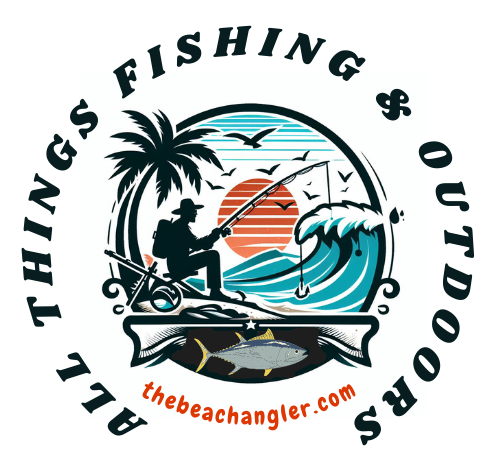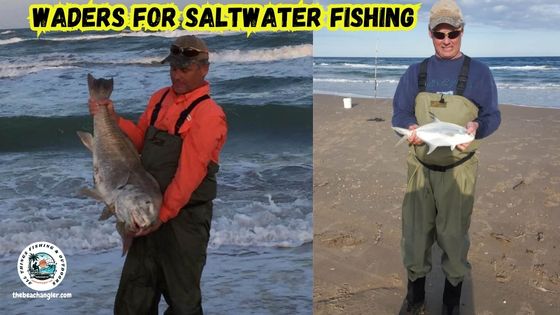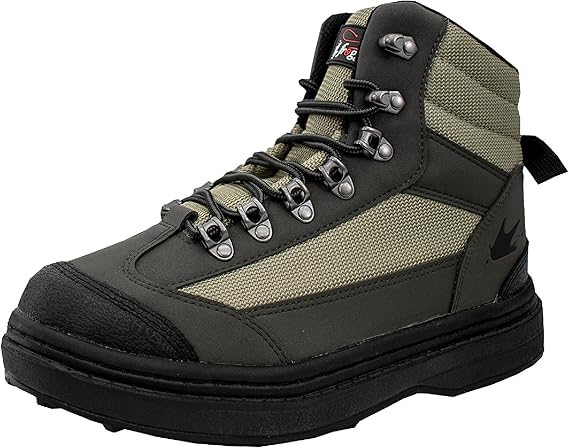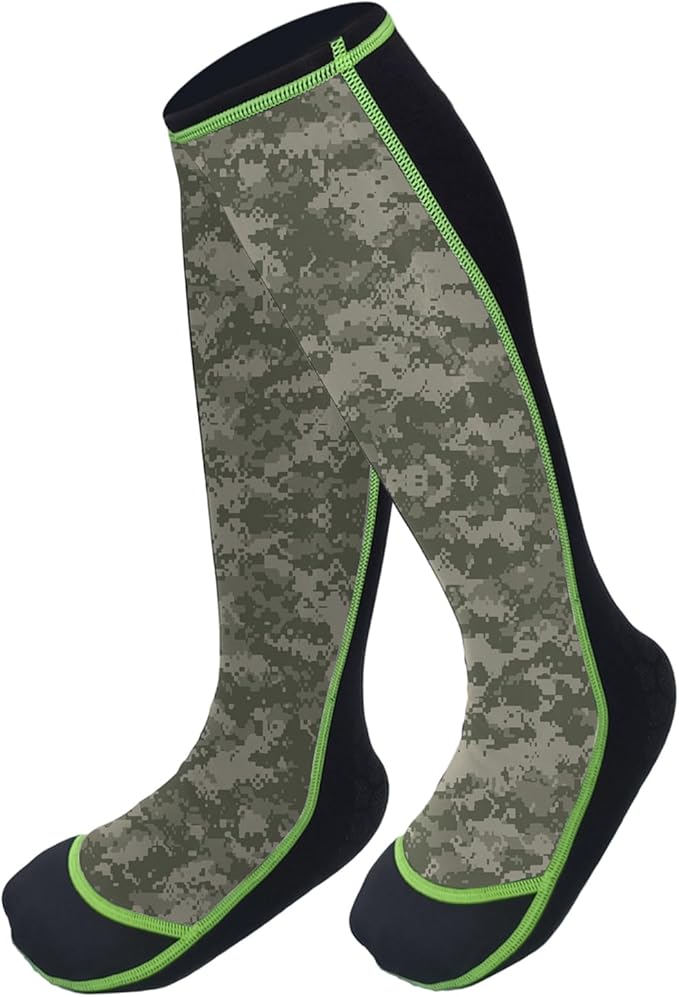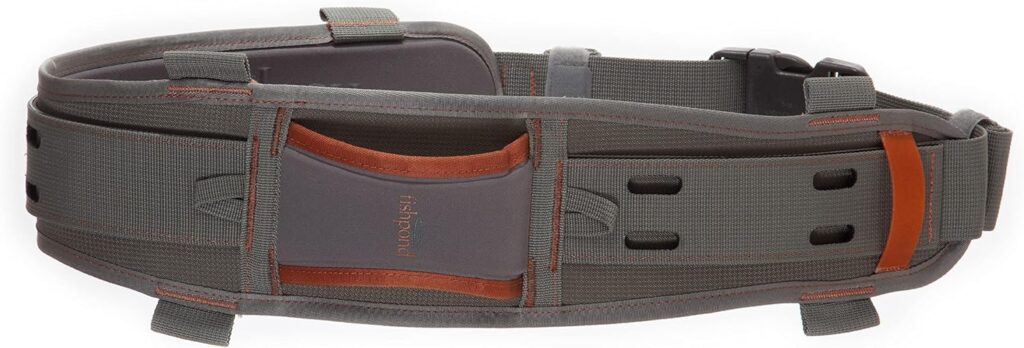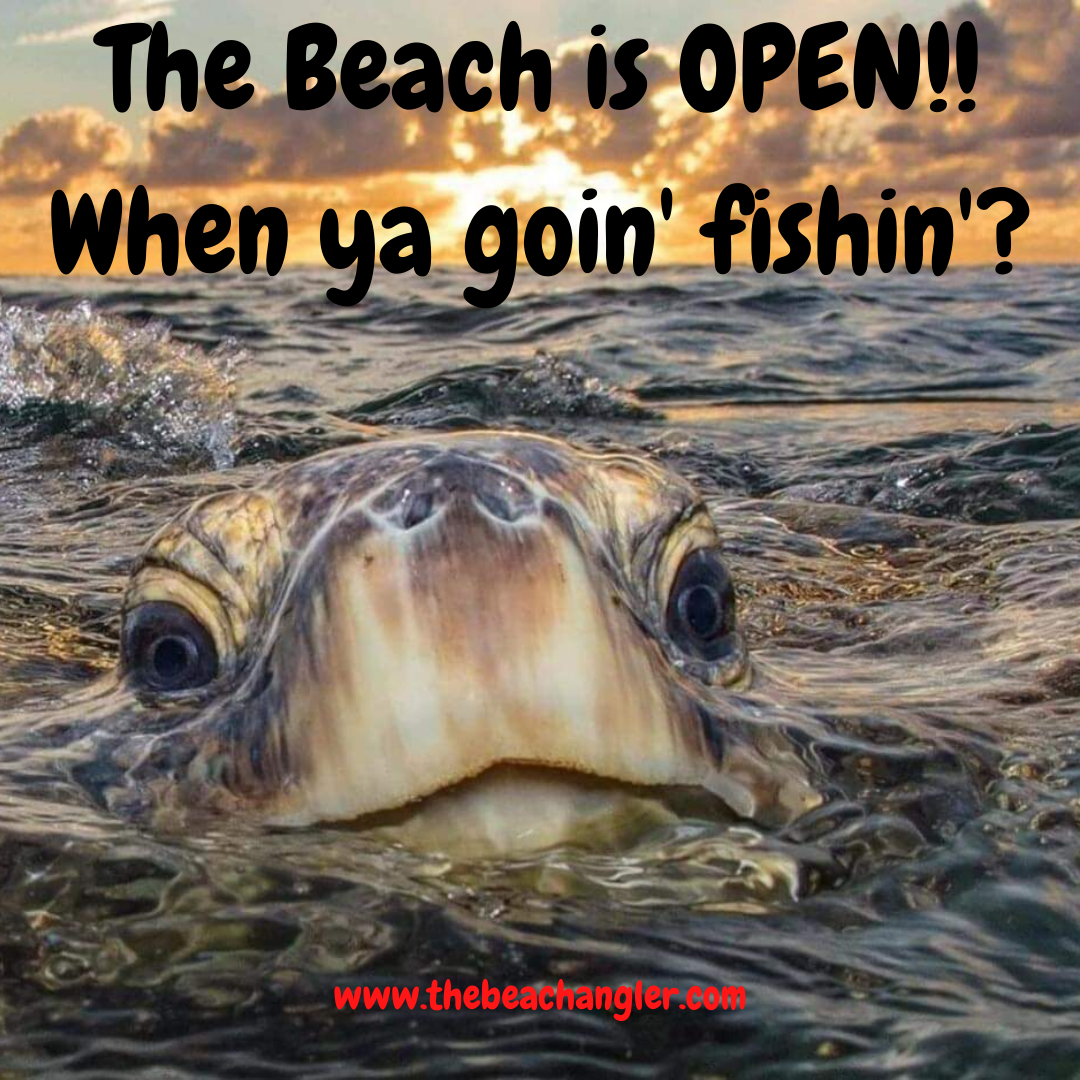If you’re heading out for saltwater fishing, choosing the right waders is one of the most important decisions you’ll make to stay comfortable, dry, and focused on catching fish. Saltwater environments can be tough on gear, so making an informed choice can extend the life of your waders and make every outing more enjoyable.
QUICK LOOK: Key Features to Consider for Saltwater Waders
- Water Depth: I choose chest waders when fishing in unpredictable surf, tidal rivers, or flats where deeper holes can surprise me. If the water stays shallow, waist-high or hip waders feel lighter and less restrictive for plenty of movement.
- Weather: In summer or hot climates, breathable waders made from lightweight, water-resistant fabrics keep me from overheating. On cold mornings, especially during early spring or fall, I switch to insulated neoprene models to cut the chill and block wind.
- Wading Style: If I swap out boots for different terrain (maybe spiked soles for rocks, felt for mud), stockingfoot waders make sense. When I want to be in and out of my gear quickly or need fewer pieces to keep track of, I go with bootfoot waders.
- Durability: Saltwater is tough on everything. I always look at reinforcements in the knees and seat, sealed seams, and fabrics with a good track record for abrasion resistance. Brands that specifically mention saltwater durability in their descriptions usually deliver. Heavy-duty zippers and corrosion-resistant buckles are big pluses.
- Breathability: My comfort goes way up with breathable waders. Sweating in a plastic suit is no fun, and breathable models let water vapor escape, so I stay comfortable longer. This is super important for full-day trips, especially when the sun is blazing or humidity climbs.
- Fit: If the waders are too loose, I end up dragging fabric, which can slow me down and tire me out. Too tight and I lose mobility. A snug, tailored fit with room for base layers on cold days works best for me. I always check inseam and foot size to make sure I’m getting the right fit, and I look for adjustable straps for dialing in that perfect comfort zone.
I’m sharing my experience and research so you can find the pair that matches your fishing style, the weather, and the spots you’ll be wading in. Plus, I’ll go over the top tips I’ve picked up for getting more out of your waders every season.
Essential Gear for Saltwater Wading
Saltwater fishing brings unique challenges for waders and other gear. Salt, sand, shells, and rough surfaces can cause wear faster than in freshwater settings. I notice this every season; my gear takes a real beating out on the flats and tidal creeks.
Picking equipment designed to handle constant abrasion, salty water, and quick-changing weather is important if you want your gear to last more than one outing. Since saltwater fishing often means deeper water and more time in the elements, most anglers look for waders that provide comfort, breathability, and easy movement.
The saltwater category keeps growing, with new materials and features designed just for coastal use. Modern options not only provide reliable waterproofing, but some brands also add UV protection and reinforced panels in high-contact spots, stepping up both safety and performance for serious anglers. It’s become easier now to track down options that fit your needs—no more squeezing into a one-size-fits-all pair.
What to Look for in Saltwater Fishing Waders
I start each shopping trip with a list of what matters: water depth, the kind of weather I fish in, how much I move around, and how easy the gear is to use and maintain. These factors help narrow the options so I’m not overwhelmed at the store. Extra attention to saltwater-specific features gives your gear a boost in lifespan and comfort:
- Water Depth: I choose chest waders when fishing in unpredictable surf, tidal rivers, or flats where deeper holes can surprise me. If the water stays shallow, waist-high or hip waders feel lighter and less restrictive for plenty of movement.
- Weather: In summer or hot climates, breathable waders made from lightweight, water-resistant fabrics keep me from overheating. On cold mornings, especially during early spring or fall, I switch to insulated neoprene models to cut the chill and block wind.
- Wading Style: If I swap out boots for different terrain (maybe spiked soles for rocks, felt for mud), stockingfoot waders make sense. When I want to be in and out of my gear quickly or need fewer pieces to keep track of, I go with bootfoot waders.
- Durability: Saltwater is tough on everything. I always look at reinforcements in the knees and seat, sealed seams, and fabrics with a good track record for abrasion resistance. Brands that specifically mention saltwater durability in their descriptions usually deliver. Heavy-duty zippers and corrosion-resistant buckles are big pluses.
- Breathability: My comfort goes way up with breathable waders. Sweating in a plastic suit is no fun, and breathable models let water vapor escape, so I stay comfortable longer. This is super important for full-day trips, especially when the sun is blazing or humidity climbs.
- Fit: If the waders are too loose, I end up dragging fabric, which can slow me down and tire me out. Too tight and I lose mobility. A snug, tailored fit with room for base layers on cold days works best for me. I always check inseam and foot size to make sure I’m getting the right fit, and I look for adjustable straps for dialing in that perfect comfort zone.
Types of Waders: Pros and Cons for Saltwater
There are a few main types of waders you’ll run into, and each has its spot in my gear closet depending on the trip. Here’s what I’ve found using them out on the tidal flats and inlets:
Types of Waders for Saltwater Fishing

Chest Waders:
These cover your body from your feet up to your chest. I use these for deep or unpredictable water. Think surf fishing, wading far out on saltwater flats, or working spots where I need maximum coverage from crashing waves or wind-driven rain. They’re also handy for blocking out wind and spray on gusty days on the coast.
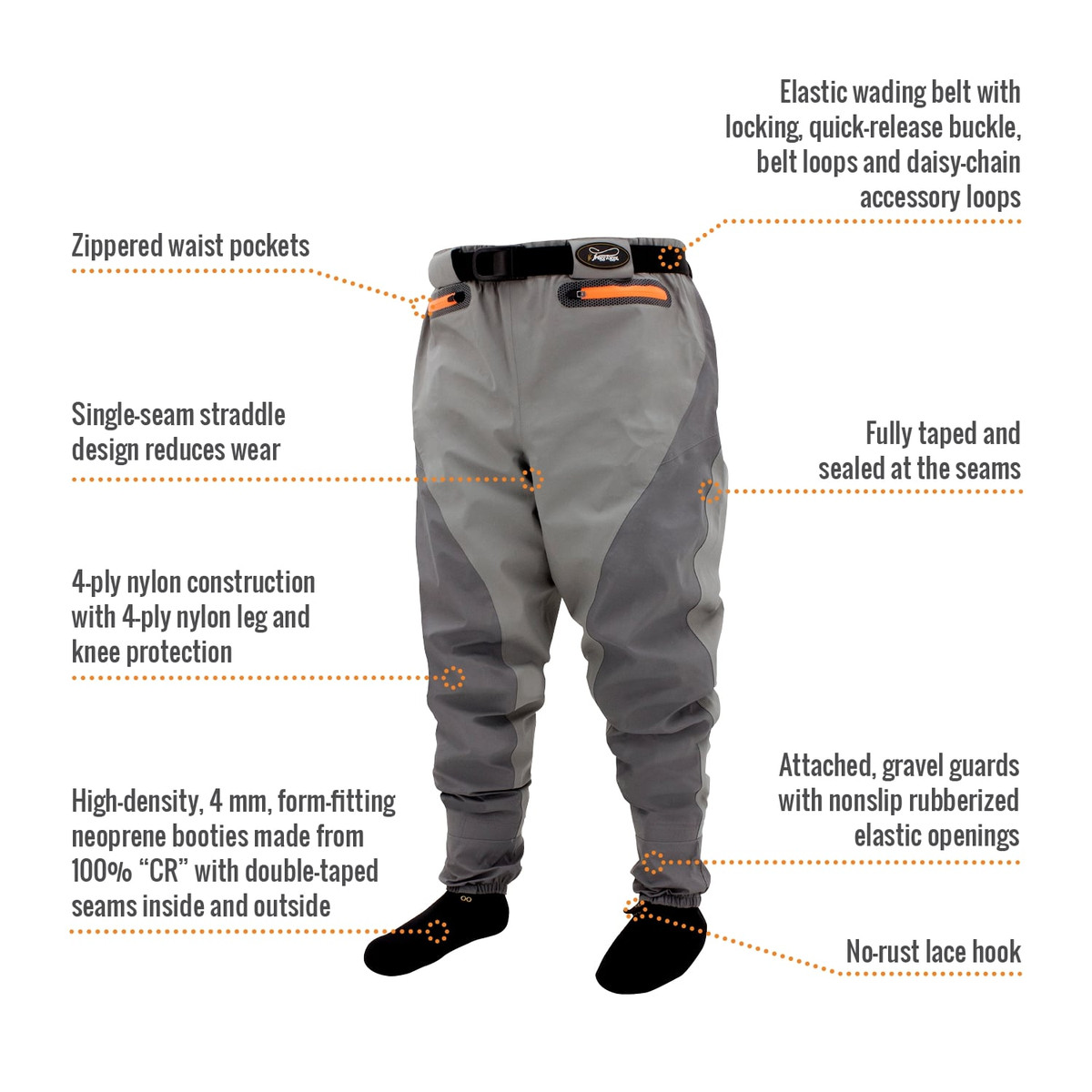
Waist-High Waders:
Stopping just under my belt, these are less bulky and feel cooler. I pick these for warm days when the flats only drop to knee depth, or if I know I’ll be moving a lot along sandy banks and marsh edges.

Hip Waders:
Hip waders are boots that cover just up to mid-thigh. I pull these on when I’m sticking close to shore or walking marshy edges where the water is shallow. Hip waders pack down small, making them easy to toss in the truck for a last-minute session.

Neoprene Waders:
Made from thick, flexible rubber material, these are my go-to when it’s really cold at dawn or during winter tides. They don’t breathe well, but the insulation can be a lifesaver on a chilly day when water temps are low and breezes cut right through lighter gear.

Breathable Waders:
Crafted from high-tech, multilayer fabrics that block water out but let sweat out, these work best for most days. I rely on these for long, hot sessions under the sun, and they prevent that swampy, sweaty feeling in my boots. Modern breathables often come with added abrasion-resistant panels and pockets for small tackle, so you can keep essentials handy.

Stockingfoot Waders:
These have neoprene socks at the bottom, giving me the freedom to pick wading boots that fit whatever shoreline or tidal bottom I’m planning to fish. I like the support and grip from specialized wading boots, and swapping soles is easy if you move from rocks to sand.
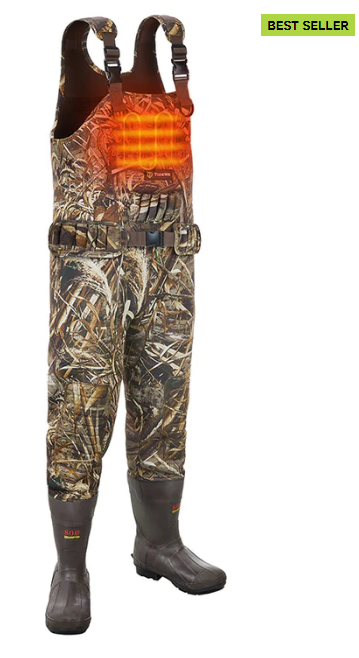
Bootfoot Waders:
These include built-in rubber or PVC boots. I grab these for quick trips or when it’s super muddy since cleaning one piece is faster. Fewer seams mean fewer places for leaks. They also keep sand and gravel from sneaking in, which can cut down on complaints after long days on soft bottoms.
Practical Tips for Getting the Right Fit and Longevity
Trying on waders before buying can make a world of difference. Every brand uses different sizing. I usually wear my typical fishing layers to the shop, then try walking, squatting, and bending over in the waders to simulate real movement.
Boots or socks shouldn’t pinch, and the top of the waders should come just under my arms without gapping. If you can’t visit a shop, make sure to check the manufacturer’s sizing charts closely and read up on angler reviews online to spot any quirks in sizing or fit.
I always pick up a wading belt. It’s one of the best safety devices; if I fall, it keeps water from rushing in. A snug belt also makes for a better fit and helps me keep gear organized with external clips or pockets. Adding a safety whistle and a small waterproof pouch for your phone or keys can make a big difference in emergencies or unexpected situations. It’s a small precaution that pays off.
I make sure my wading boots have the right sole for my chosen terrain. Slippery rocks require felt or rubber with a solid grip. Sandy, weedy flats call for cleated soles. Some boots let me swap soles, which comes in handy for different trips or seasonal changes. Don’t forget to check boot laces and drainage holes; when boots drain well, you’ll be much lighter on your feet all day.
Common Challenges and How I Handle Them
Saltwater wading presents a few problems that pop up pretty often. Here’s what I pay attention to and how I manage these headaches:
- Leaks and Abrasion: Sharp shells, barnacles, and rough rocks can slice into waders. I check my waders after every trip for signs of wear. Patching small leaks early and rinsing the waders with freshwater helps cut down on long-term damage. Always bring a small repair kit in your tackle box, just in case; a quick patch can save a fishing trip.
- Funky Odors and Mold: Saltwater and sweat can create an unpleasant smell. I hang my waders to dry inside out in a shady spot before storing them. Occasionally, I use a gentle detergent designed for outdoor gear to wash away grime, and I never leave wet waders rolled up in the trunk.
- Boot Comfort and Blisters: Long walks in sand or mud can cause foot pain. I always wear wicking socks under my wader boots and look for boots with good ankle support. Occasionally, I swap in supportive insoles if I know I’ll be covering a lot of ground. Don’t forget to pack a spare pair of dry socks—they’re your best friend after an unexpected dunking.
- Heavy Gear on Hot Days: Even lightweight waders can feel hot, especially during midsummer tides. I take extra breaks to cool off, and always carry extra drinking water; being comfortable keeps me fishing longer. Sometimes I skip the waders altogether on shallow days and just wear quick-dry pants with sandals—the flexibility to mix things up helps out a lot.
Durability Tips I Trust
I always rinse my waders in fresh water after a saltwater trip and dry them fully before storage. Salt left on the fabric can wear down even the toughest materials and cause zippers or buckles to corrode. Keeping sand out of the boots and socks will also help prevent early wear and improve comfort.
I store waders hanging up in a cool, dry place—never crumpled in a bag—which prevents creasing and avoids unnecessary stress on the seams. For an occasional deep clean, I follow the manufacturer’s instructions, and I never use harsh detergents that can break down waterproof coatings.
Waders in Action: Examples From Real Trips
I remember a recent surf fishing morning where the tide pushed way higher than expected. My chest waders kept me dry even when a few waves crashed over my knees. I’ve also had trips in warm late summer when lightweight, breathable waders made a full day on the flats possible without overheating.
Friends I fish with swear by their bootfoot waders for muddy launches, where the one-piece construction helps them get in and out of the truck fast. Different situations call for different gear, and I’ve learned to pick the waders that fit the day’s conditions best.
- Flats Fishing: Lightweight breathable waders make long walks easier and keep me cooler. I can cover more ground without feeling like I’m dragging an extra layer.
- Surf Fishing: Chest waders plus a sturdy wading belt help prevent cold water from flooding in if I take a spill. The added height also shields me from floating seaweed and small debris kicked up by the surf.
- Marsh and Muddy Edges: Bootfoot models save time, especially when moving between shorelines and muddy sloughs. They’re my favorite on rainy days or when launching my kayak from mucky banks, since I don’t have to worry as much about water seeping in at the ankles.
Waders are more than just waterproof pants—they’re serious insurance for safety and comfort. I’ve come to appreciate the peace of mind, knowing my gear can keep up with whatever happens out there. It’s given me more confidence to explore new spots, whether I’m chasing stripers at sunrise or just relaxing with friends on a spring afternoon on the bay.
Frequently Asked Questions on Waders for Saltwater Fishing
Can I use freshwater waders for saltwater fishing?
Yes, you can, but saltwater is rougher on the seams and fabrics. I’ve found that rinsing them after every use and picking models with heavy-duty construction helps them last much longer in saltwater settings. Over time, dedicated saltwater waders tend to stand up better, especially if you fish the coast a lot.
Are stockingfoot or bootfoot waders better for saltwater?
Both work, but I go with stockingfoot waders when I want customizable boots for better support and grip. Bootfoot models are quicker and easier to deal with, especially for short or muddy trips. If you’re fishing in colder water or muck, bootfoot waders might keep you warmer and cut out the extra setup step.
What should I wear under my waders?
I prefer moisture-wicking base layers for comfort and warmth. Breathable fabrics like merino wool or synthetic blends work best, and I avoid cotton since it holds onto moisture. On very cold days, I’ll double up with fleece pants, but I always make sure to avoid anything that holds water for long.
How do I prevent leaks in my waders?
I inspect my waders after every outing, keep them clean, and patch any pinholes quickly with repair kits. Proper drying and storage help, too. Keeping sharp tools or keys away from the fabric also helps avoid accidental slices or punctures.
Getting the Most Out of Your Saltwater Waders
Finding the right waders for saltwater fishing comes down to picking a style and material that fits your water depth, climate, and the way you fish. Paying attention to fit, durability, and breathability will keep you comfortable and dry. If you treat your gear well, rinsing, drying, and making repairs early, your waders should keep you fishing for seasons to come.
It’s all about making smart choices so you can focus on what matters most: enjoying every minute out on the saltwater. Don’t forget that a little gear care goes a long way. The better you treat your waders, the more adventures you’ll get from every pair out there on the water.
Check Out Our Most Recent Articles:
- 9 Winter Surf Fishing Tips For Stripers

- KastKing Sharky Baitfeeder III Spinning Reel
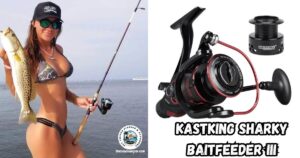
- Are Drones Legal For Fishing?
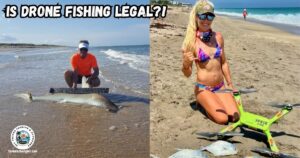
- Piscifun Atlantix Electric Reels
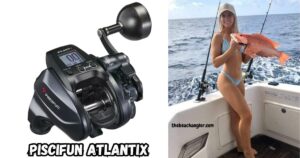
- Bulls And Pomps From The Winter Surf
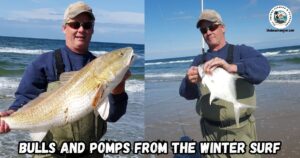
- Daiwa Laguna Rod Reviews
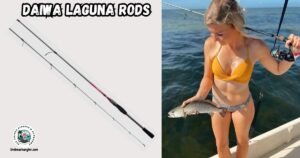
As always, stay safe, enjoy the journey, and please try to leave it cleaner than you found it. If you have any comments, questions, ideas, or suggestions, please leave them in the comment section below, and I’ll get back to you ASAP. You can follow us on Facebook: Rex The Beach Angler, Instagram: thebeachangler7, Twitter: @AnglerBeach, and YouTube: Man Art Creations.
P.S. Thanks so much for checking out our blog; we really appreciate it. Just so you know, we may receive a commission if you click on some of the links that appear on our site. This helps us keep our content free and up-to-date for everyone. We appreciate your support!
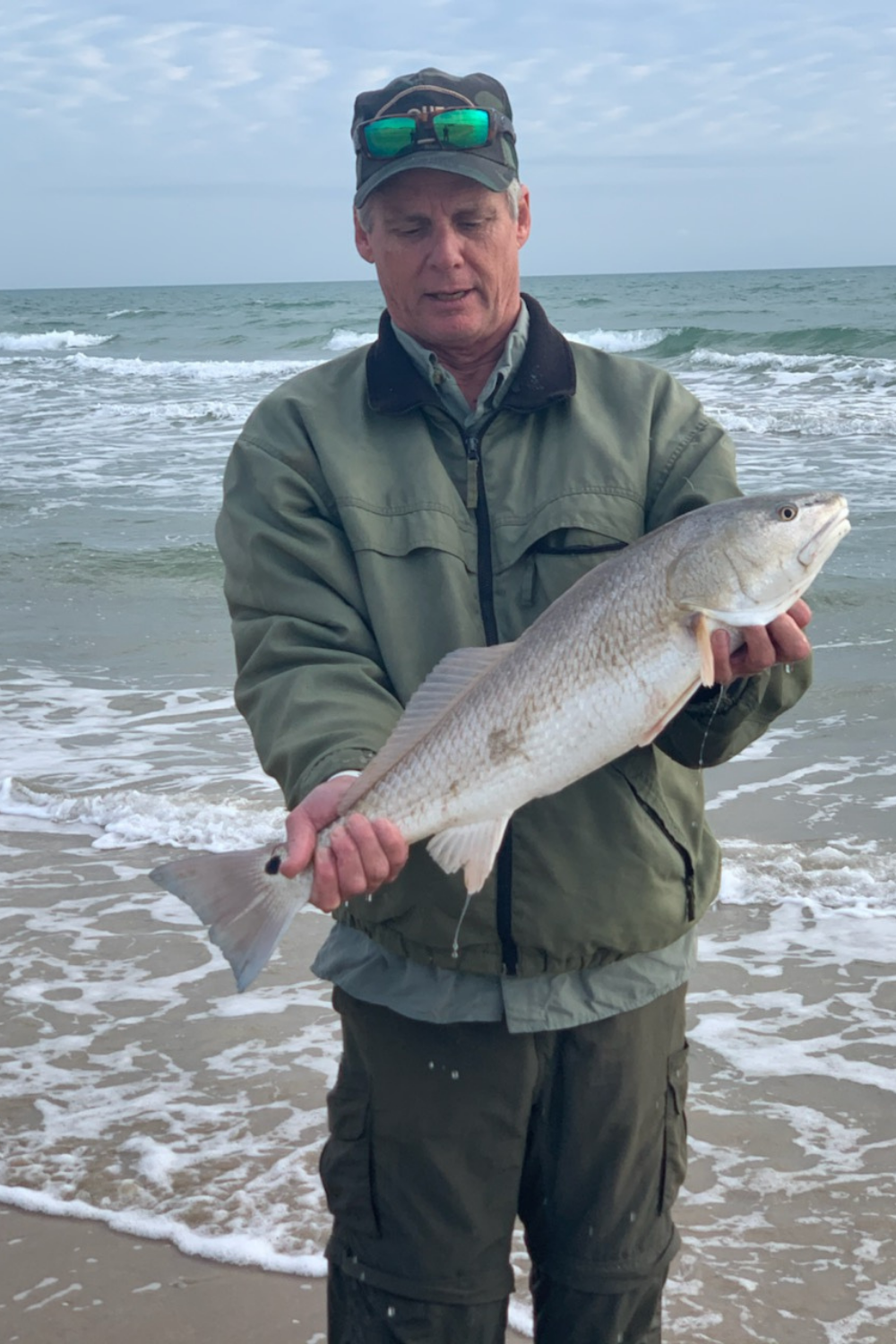
A life long surf fisherman with 50+ years of experience, I am also an avid hunter and outdoorsman. I will be sharing my passion for the outdoors with you so be prepared for hunting, fishing, camping, hiking and more. Along with gear reviews and the latest trends and innovations in the outdoor industry.
